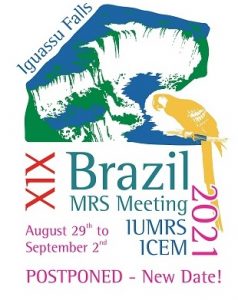
B-MRS & ICEM: update on Corona Virus.


|
||||||||||||||||||||||||||||||||||||||||||||||||
|
||||||||||||||||||||||||||||||||||||||||||||||||
|
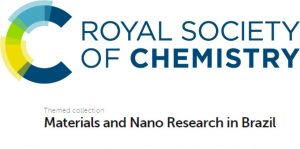 A Royal Society of Chemistry (RSC) preparou uma coleção online de artigos de autores brasileiros em comemoração ao XVIII B-MRS Meeting (Balneário Camboriú, 22 a 26 de setembro de 2019). A RSC é apoiadora desta edição do evento anual da SBPMat.
A Royal Society of Chemistry (RSC) preparou uma coleção online de artigos de autores brasileiros em comemoração ao XVIII B-MRS Meeting (Balneário Camboriú, 22 a 26 de setembro de 2019). A RSC é apoiadora desta edição do evento anual da SBPMat.
Intitulada Materials and Nano Research in Brazil, a coleção reúne 55 artigos publicados em periódicos da editora RSC entre 2017 e 2019. Todos os artigos selecionados podem ser acessados sem custo (open access) até 15 de outubro de 2019.
A coleção está disponível em www.rsc.li/brazil-mrs-2019
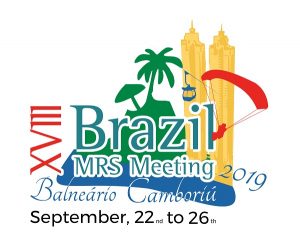 As inscrições ao XVIII Encontro da SBPMat/B-MRS Meeting (Balneário Camboriú, 22 a 26 de setembro de 2019) estão abertas no site do evento e têm valores diferenciados (com desconto) até
As inscrições ao XVIII Encontro da SBPMat/B-MRS Meeting (Balneário Camboriú, 22 a 26 de setembro de 2019) estão abertas no site do evento e têm valores diferenciados (com desconto) até 2 de agosto 9 DE AGOSTO (PRORROGADO). Além disso, inscrições no local evento (sem desconto) estarão disponíveis durante todo o encontro.
Entre os participantes de instituições brasileiras, sócios da SBPMat têm desconto especial na inscrição. Pessoas que ainda não são sócias ou não estão com a anuidade em dia podem regularizar a situação no momento da inscrição ao evento e, assim, usufruir do desconto na inscrição e dos demais benefícios de ser sócios/sócias da SBPMat. O valor da anuidade de sócio somado ao valor da inscrição ao evento é igual ao valor da inscrição para não-sócios.
Tabela com os valores da inscrição ao evento: https://www.sbpmat.org.br/18encontro/#registration.
Valores da anuidade de sócio SBPMat e benefícios de ser sócio: https://www.sbpmat.org.br/pt/socios-sbpmat/associe-se/
|
||||||||||||||||||||||
|
||||||||||||||||||||||
|
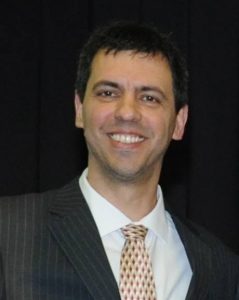
O professor Aldo Jose Gorgatti Zarbin (UFPR, Departamento de Química), sócio da SBPMat, é um dos 58 cientistas do mundo, e o único da América Latina, que participou de um artigo especial sobre o futuro da Química, publicado na Nature Chemistry no dia 22 de março, na ocasião do décimo aniversário da revista. Zarbin e os outros cientistas foram convidados por esse destacadíssimo periódico científico a escreverem acerca dos aspectos mais desafiadores e interessantes do desenvolvimento das linhas de pesquisa nas quais atuam.
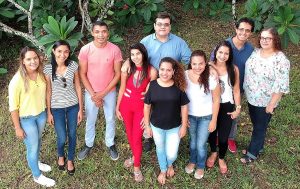
O programa University Chapters (UCs) da SBPMat inicia 2019 com um novo integrante, o UC da Universidade Federal de Pernambuco (UFPE). Com a criação desta unidade, o programa passa a contar com nove UCs distribuídos nas regiões sul, sudeste, nordeste e norte do país.
A equipe interdisciplinar do novo UC reúne 15 estudantes (três de graduação, cinco de mestrado e sete de doutorado) de cursos de Química, Ciências Biológicas e Ciência dos Materiais da UFPE. O tutor da unidade é o professor Petrus d´Amorim Santa Cruz Oliveira.
“O que nos motivou a criar nosso UC foi a necessidade de explorar o mundo da Ciência de Materiais, reinventando novos caminhos para ampliar e aproximar pessoas de todas as partes, desta forma diversificando e fortalecendo a nossa formação cada vez mais”, diz Karolyne Santos da Silva, presidente do UC. “Nossa expectativa maior é despertar o jovem para a ciência, mostrando que há possibilidades de ser inovador e de ter a oportunidade de vivenciar novas experiências com outros pesquisadores”, completa a doutoranda em Ciência de Materiais.
No contexto do programa UCs da SBPMat, a equipe planeja, inicialmente, realizar uma série de eventos: um curso de férias, o I Encontro de Ciência e Engenharia de Materiais de Pernambuco e workshops anuais.
Conheça o Programa UCs da SBPMat e as nove unidades que possui até o momento nos estados de Minas Gerais, Pará, Pernambuco, Piauí, Rio Grande do Sul e São Paulo: http://sbpmat.org.br/university-chapters/
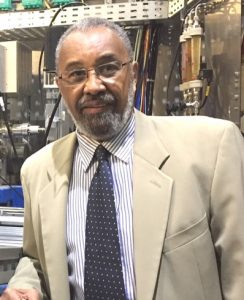
O professor Oswaldo Luiz Alves (IQ – UNICAMP), sócio da SBPMat, foi agraciado com o título de Professor Honoris Causa da Universidade Federal do Ceará (UFC). O título lhe foi outorgado pelo Conselho Universitário da instituição no dia 17 de dezembro de 2018. Além de ser professor titular da UNICAMP, Alves é docente colaborador do Programa de Pós-Graduação em Física da UFC há mais de 30 anos.
Em outubro de 2018, o professor Alves recebeu mais uma importante distinção, a admissão na Ordem Nacional do Mérito Científico na classe Grã-Cruz.
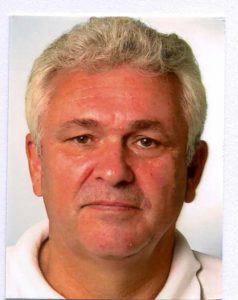
In the late 1970s, when he was a doctoral student, German scientist Heinz von Seggern came to Brazil for the first time and met some local researchers with whom he still collaborates. His host was Bernhard Gross, another German scientist who settled in Brazil and is considered a pioneer of materials research in the country. This was the beginning of a series of scientific visits of Heinz von Seggern to Brazil, which included the participation in five B-MRS Meetings, the annual events of the Brazilian Materials Research Society. In the last edition of the event, Prof. Heinz von Seggern gave a plenary lecture on ferroelectrets.
Heinz von Seggern graduated in physics from the University of Hannover (Germany) in 1976. He received his PhD degree in electrical engineering from the Technical University of Darmstadt (Germany) in 1979. His thesis advisor was Prof. Gerhard Sessler, one of the inventors of the electret microphone, the most common type of microphone in use today. After that, Heinz von Seggern became a postdoc and then a principal investigator at AT&T Bell Laboratories (USA). From 1985 to 1997 he worked at Siemens research center in Erlangen (Germany), starting as a principal investigator and then being promoted to department head. Since 1997, he is Full Professor at the Technical University of Darmstadt, where he leads the Electronic Materials Group.
Throughout four decades of scientific research, Heinz von Seggern has made important contributions to the field of materials in understanding fundamental phenomena, developing analysis techniques and applications, and inventing devices. He has published over 280 scientific papers in peer-reviewed journals with more than 7.800 citations, and his h-index is 46 (Google Scholar).
See our interview with this scientist.
B-MRS Newsletter: – What motivated you to become a scientist and, particularly, a materials scientist?
Heinz von Seggern: – Already as a high school student my main interest was directed towards natural science. This passion was strongly motivated by one of my teachers who really understood to ignite my love for this field. So it was a natural thing for me to study physics, however, I always kept in touch with mathematics and chemistry. After finishing my diploma in physics at the Technical University of Hannover, I started my PhD work at the Technical University of Darmstadt in the electrical engineering department and two and a half years later I received my doctoral degree in electrical engineering. The following four out of five years I spend at Bell Laboratories in Murray Hill, New Jersey, USA whose fabulous working conditions made my bonds to science even stronger. My path to materials science started with my return to the Corporate Research Laboratories of Siemens AG in Erlangen where I spend 12 years before being appointed as full professor at the Technical University of Darmstadt, Germany. In the time at Siemens my work was focused on more practical aspects of science which I started to be increasingly interested in. The ability to change and adapt material properties to practical demands, which is the basic task of materials science, fascinated me more and more.
B-MRS Newsletter: – In your opinion, what are your main contributions to the materials field? Please, select a couple of discoveries/developments, describe them briefly, describe the context in which they were developed, and share the papers or patents references.
Heinz von Seggern: – Since I have been working on different subjects it is not so easy to point out my or our major contributions to the materials field. I will concentrate on one discovery or development in each field. Let’s start with my PhD study. My task was to understand the charge transport and electronic trap structure of Teflon FEP thin films to back up the lifetime expectation of electret microphones. I discovered by means of thermally stimulated discharge measurements that Teflon FEP contains two different types of energetically deep electron traps which are located near the surface and in the bulk of the films, respectively. This discovery was made possible by comparing TSD results of corona and electron beam charged samples whereby corona charging leads to filling of traps close to the surface and electron-beam charging allowed for deposition of charge into surface and bulk traps dependent on the utilized electron energy. From this finding a charge transport model was developed depending on the initial location of the electrons after charging. The model is based on trapping and thermally induced release. In case of corona charging the transport is initiated by a thermally induced release of electrons from surface traps and a subsequent capture and release by deeper bulk traps [Ref: H. von Seggern, J. Appl. Phys. 50, 7039 (1979), Heinz von Seggern, J. Appl. Phys. 50, 2817 (1979)]. The morphological reason for the different trap depth of surface and bulk can be seen in the film production process where different cooling rates apply to the surface and the bulk of the films.
After finishing my PhD degree I continued this research at Bell Laboratories investigating the transport of positive charges. In contrast to the electron traps, hole traps are relatively shallow and are distributed through the complete film. Once filled they empty relatively fast already at room temperature. On the other hand the number to energetically deep traps was found to be rather small resulting in a low capture rate. This implies that holes have a high probability to penetrate the film via hopping through shallow traps without being captured by deep traps which implies a rather low charge stability of Teflon FEP for holes. We were able to show that this problem can be circumvented by charging at high temperatures filling only deep traps [H. von Seggern, J. West, J. Appl. Phys. 55, 2754 (1984)]. This charge stabilization for positive charges recently became important with respect to so called piezoelectrets where by symmetry breaking a novel piezoelectric material was generated utilizing only nonpolar components. For these devices the stability of both charge types is essential.
During my time at the Corporate Research Labs of Siemens AG in Erlangen the field of interest changed to x-ray storage phosphors which are currently applied in so called image plates used commercially in x-ray diagnostics. The image plate thereby combines the classically utilized silver halide film and the intensifying screen where latter was applied to convert incoming x-rays to visible photons which are then detected by the photographic silver halide film. The working principle of the image plate is that by x-ray exposure electrons and holes are generated and trapped as F-centers and Vk-centers, respectively. Readout occurs by photostimulation of the electron and radiative recombination with the Vk-center. The released energy is then converted to a rare earth ion which emits light at its characteristic wavelength. Thereby the intensity of the emitted photons is indicative for the locally absorbed x-ray dose. My major contribution to this field was the discovery of the basic working principle of these photostimulable phosphors and the existence of spatially correlated and uncorrelated PSL centers which allowed for a deeper insight into the physics of storage phosphors [H. von Seggern et al., J. Appl. Phys. 64, 1405 (1988)]. Another contribution was the invention of neutron image plates fabricated by mixing an effective neutron absorber to the granular storage phosphor particles [T. Bücherl, H. von Seggern et al., Nucl. Instr. Meth. A333, 502 (1993)]. This technique is still widely used in neutron image detection.
After accepting the position as full professor in Materials Science at the Technische Universität Darmstadt I concentrated my efforts on the field of Organic Electronics which I already started at Siemens some years before. In the first years we focused on the energetic trap distribution of organic semiconductors. We were the first to experimentally prove the existence of a Gaussian trap distribution predicted earlier by Bässler et al. through Monte Carlo simulation. The experimental method used a refined thermally stimulated discharge technique known as fractional discharge, where a stepwise increase in temperature combined with the corresponding thermal release of charge allows one to determine the trap distribution which up to now is the only technique known to directly determine the distribution of traps [N. von Malm et al., J. Appl. Phys. 89, 5559 (2001); R. Schmechel et al., Phys. Stat. Sol. (a) 201, 1215 (2004)]. The largest scientific attention we received, however, for the invention of the organic light emitting transistor (OFET) based on tetracene and a polyfluorene derivative. In such OFETs it was shown to be possible to obtain ambipolar transport by injection of electrons and holes from source and drain, respectively [A. Hepp, H.von Seggern et al., Phys. Rev. Let. 157406, 1 (2003); M. Ahles, H. von Seggern et al., Appl. Phys. Let. 84, 428 (2004)]. It was also shown that the same ambipolar transport can be used to construct colour tunable OFETs [E. J. Feldmeier, H. von Seggern et al., Adv. Mater 22, 3568 (2010)] where the motion of the emissive recombination zone through the transistor channel is used to excite different overlaying organic semiconductors with different emission wavelength.
In the last years at TU Darmstadt I have revisited charge storage in organic polymers known as ferro- or piezoelectrets. The cellular polymer polypropylene has shown by Finnish scientists to exhibit large piezoelectric d33 coefficients after poling by high electric fields with the only disadvantage that the trapped charge turned out to be thermally unstable. Therefore structures changed quickly to Teflon based sandwiches of solid FEP /ePTFE/ solid FEP, where ePTFE is a highly porous PTFE consisting of up to 98% air, and later to completely air filled structures. My contribution to that field is the physics explaining the hysteresis and thereof the deduction of the maximal stable polarization which then allows for the theoretical deduction of the piezoelectric d33 coefficient for plane-parallel structures. This knowledge allows for the optimization of the piezoelectric effect and therewith increases the potential for future applications [S. Zhukov, H. von Seggern et al., J. Appl. Phys. 102, 044109 (2007); S. Zhukov, H. von Seggern et al., Scientific reports 8, 4597 (2018)].
B-MRS Newsletter: – Please make a brief story of your interaction with Brazil and with Prof Bernhard Gross.
Heinz von Seggern: – During my PhD work at TU Darmstadt Prof. Gross was a frequent guest of Prof. G.M. Sessler, my thesis adviser. Before my final PhD defense he invited me to visit the Institute of Physics of the University of Sao Paulo (USP) in Sao Carlos. Here I met all the people with whom I am still in contact and friendship with, namely Roberto M. Faria and Jose A. Giacometti who in the meantime have become established professors at USP. After finishing my PhD study I went to Bell Laboratories, Murray Hill, NJ. where Profs. Gross and Sessler were welcomed guest almost every year. The collaboration was extremely fruitful and resulted in a number of joint publications. In 1984 I then left Bell Labs and started to work at Siemens Corporate Research on different topics for the next 12 years and naturally the collaboration was at rest. But as soon as I became appointed Professor at TU Darmstadt I revitalized my connection to the Institute of Physics of Sao Carlos, whose polymer group is now called Grupo de Polimeros “Prof. Bernhard Gross”. From that year on I visited initially Prof. Giacometti and later Prof. Faria almost yearly for up to two month financed generously by FAPESP through various programs. These stays were always very enjoyable and busy, and quite a few publications have resulted.
B-MRS Newsletter: – How many times did you attend the B-MRS Meetings? Do you remember when was the first time?
Heinz von Seggern: – In total I have attended five Brazilian MRS meetings starting in Natal 2007, Florianopolis 2012, Joan Pessoa 2014, Rio de Janeiro 2015 and again Natal in 2017. My first stay in Natal 2007 I remember especially since I was allowed to present our work in front of a great audience on the recently discovered light emitting organic field effect transistor and, on a more personal note, I also remember the wonderful Caipirinha my wife and me were enjoying every evening during sunset at the ocean side.
B-MRS Newsletter: – You have about 40 years of strong experience as a researcher. Please leave a short message with some advice for the students and junior scientists of our community.
Heinz von Seggern: – In the context of scientific education Prof. Bernhard Gross once said to me: “For someone who knows nothing, everything is possible.” There is a lot of truth in these few words. We all tend to sometimes talk about things that seem to be obvious to us but in reality they are not. My advice therefore is, especially to young scientists, to always ask yourself whether you understand the physical and/or chemical grounds of your current research. If not I suggest to you to acquire the missing basics, which then allows you to select from “everything is possible” the physical meaningful trials. This will definitely help you to make the right decisions to continue your research in a meaningful way.
|
||||||||||||||||||||||||||||||
|
||||||||||||||||||||||||||||||
|